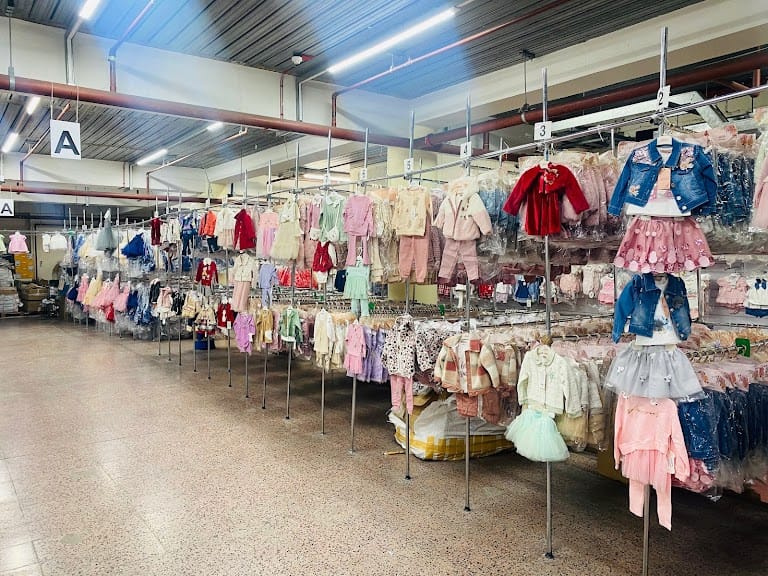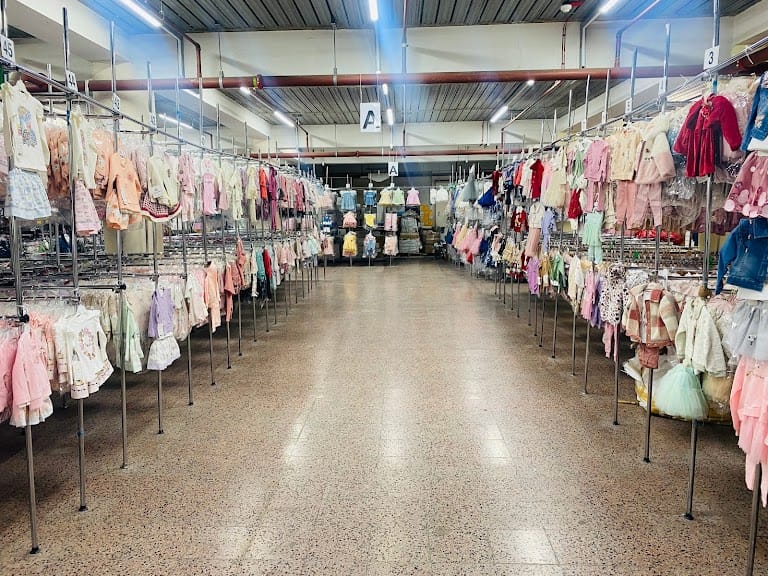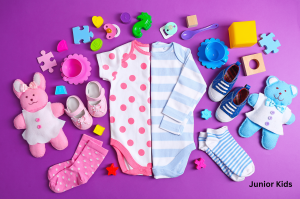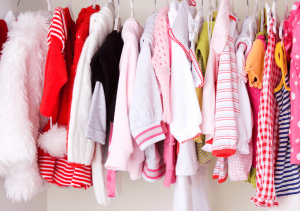No products in the cart.
Return To Shop10 Key Benefits of Partnering with a Kids Wholesale Clothing Supplier for Your Boutique
Introduction
In the competitive world of fashion, particularly in the children’s clothing sector, establishing a successful boutique requires not only a keen eye for style but also strategic partnerships. One of the most beneficial alliances a boutique owner can cultivate is with a kids wholesale clothing supplier. This relationship offers numerous advantages, ranging from cost savings to access to trendy designs, which can significantly elevate your business model. In this article, we will explore the ten key benefits of partnering with a kids wholesale clothing supplier, detailing how it can enhance your boutique’s offerings and overall profitability.
1. Cost-effective Pricing
Bulk Purchase Savings
One of the most immediate benefits of partnering with a childrenswear wholesale clothing supplier is the cost-effective pricing structure. Wholesale suppliers allow boutique owners to purchase clothing in bulk, often at significantly reduced prices compared to retail. This bulk purchasing not only lowers the individual cost per item but also enables boutiques to maintain a competitive edge by passing those savings onto their customers.
Additionally, the savings can be reinvested into other areas of the business, such as marketing or expanding the product line. For example, a boutique that saves 30% on wholesale purchases can use that margin to increase inventory or improve customer service, ultimately enhancing customer satisfaction and loyalty.
Reduced Overheads
Partnering with a wholesale supplier also helps to streamline operational costs. By minimizing the overhead associated with sourcing items from multiple retailers, boutique owners can focus on core business activities such as customer engagement and sales strategies. Suppliers often provide a single point of contact, reducing administrative burdens and the time spent managing various vendor relationships.
This reduction in overheads not only helps improve profit margins but also allows for more efficient inventory management, as the boutique can predict its purchasing needs based on sales data and seasonal trends.
2. Diverse Product Range

Variety of Styles and Sizes
A reputable kids wholesale clothing supplier typically boasts a wide range of products that cater to various styles, tastes, and sizes. This diversity enables boutique owners to curate collections that reflect their brand identity while appealing to a broad audience of parents and caregivers. From classic styles to contemporary designs, a well-stocked supplier can provide everything needed to meet customer demands.
Moreover, having access to a variety of sizes ensures that boutiques can accommodate children of all ages, enhancing customer satisfaction and driving repeat business. A diverse inventory helps mitigate the risk of overstocking on less popular items while allowing for quick adjustments based on sales trends.
Seasonal and Trendy Collections
In the fashion industry, staying ahead of trends is crucial, especially in children’s clothing where styles change rapidly. Wholesale suppliers often release seasonal collections that reflect the latest trends, allowing boutiques to refresh their inventory regularly. By having access to stylish, trendy, and seasonal offerings, boutique owners can ensure that their stores remain relevant and attractive to customers.
This adaptability is essential in an industry where consumer preferences can shift quickly, and being able to provide fresh inventory can set a boutique apart from competitors who may have a more static selection.
3. Reliable Supply Chain
Consistent Stock Availability
One of the primary concerns for any boutique owner is the ability to maintain consistent stock levels. Partnering with a wholesale kids clothing supplier can provide a steady and reliable supply chain that minimizes the risk of stockouts. Reliable suppliers often have established relationships with manufacturers, ensuring that the boutique can access trending products without significant delays.
This reliability is particularly important during peak shopping seasons, such as back-to-school and holiday periods when demand for kids’ clothing surges. Retailers can rest assured that their inventory will meet customer demand without excessive lead times that could result in lost sales.
Timely Deliveries
Timeliness in deliveries is crucial for maintaining customer satisfaction and operational efficiency. A reputable wholesale supplier understands the importance of adhering to delivery schedules. This means that boutique owners can plan their inventory accurately and avoid situations where popular items run out.
Establishing a relationship with a supplier known for their timely deliveries further strengthens the boutique’s reputation in the eyes of customers. Consistent availability of stock ensures that customers find what they need when they need it, fostering loyalty and repeat business.
4. Trendy Designs
Access to Latest Fashion Trends
Fashion is an ever-evolving industry, and children’s clothing is no exception. By partnering with a wholesale supplier, boutique owners gain access to the latest fashion trends and designs. Suppliers often attend trade shows and industry events to showcase upcoming collections, giving boutique owners the opportunity to stay ahead of the curve and offer what’s in vogue.
This access to trendy designs not only attracts fashion-forward parents but also enhances the boutique’s image as a go-to destination for contemporary children’s clothing. By regularly updating their inventory with stylish options, boutique owners can keep customers engaged and excited about what’s new.
Appealing to Modern Parents
Today’s parents are increasingly discerning shoppers who prioritize style, quality, and sustainability in children’s fashion. By collaborating with suppliers that focus on trendy designs, boutique owners can cater to this demographic effectively. Modern parents are often willing to invest in high-quality, stylish pieces that reflect their values.
By offering trendy items that resonate with this target audience, boutiques can cultivate a loyal customer base that appreciates the unique selections available, enhancing brand loyalty and driving word-of-mouth referrals.
5. Customization Options
Branding Opportunities
Customization options provided by wholesale suppliers can significantly enhance a boutique’s brand identity. Boutique owners can work with suppliers to create exclusive designs or limited-edition pieces, setting their store apart from competitors. This not only helps in branding efforts but also creates a sense of uniqueness that customers appreciate.
By incorporating a boutique’s branding elements such as logos, colors, or themes, the clothing becomes a reflection of the boutique’s identity, which can lead to increased brand recognition and customer loyalty.
Unique Offerings for Your Boutique
Customization also allows boutique owners to curate unique offerings that cannot be found in other stores. By providing exclusive designs or personalized options, boutiques can attract discerning customers who seek something special for their children. This strategy not only enhances customer satisfaction but also encourages higher price points, as exclusivity often justifies premium pricing.
Furthermore, unique offerings can create a buzz around the boutique, leading to increased foot traffic and online engagement, ultimately driving sales growth.
6. Quick Turnaround Times
Fast Replenishment of Stock
In a fast-paced retail environment, the ability to quickly replenish stock is essential. Partnering with a wholesale supplier often means faster turnaround times for restocking popular items. Suppliers typically have streamlined processes that enable them to fulfill orders promptly, ensuring that boutiques can maintain their inventory levels without significant delays.
Quick replenishment is especially crucial during peak shopping seasons when demand can surge unexpectedly. This agility allows boutiques to respond to customer needs swiftly and effectively, minimizing the risk of lost sales due to stock shortages.
Efficient Order Processing
Wholesale suppliers usually have efficient order processing systems in place, which reduces the time spent on logistics and administrative tasks for boutique owners. This efficiency allows boutique owners to focus on customer service and sales strategies rather than getting bogged down in order management. An effective order processing system can also facilitate better inventory tracking, helping to predict future demand patterns.
With streamlined order processing, boutique owners can rest assured that they are maximizing their operational efficiency and enhancing customer satisfaction through reliable stock availability.
7. Access to Seasonal Collections
Timely Launches for Holidays and Events
Having access to seasonal collections from wholesale suppliers allows boutique owners to capitalize on holiday shopping trends and events. Suppliers often prepare their inventories ahead of time to align with significant occasions like Halloween, Christmas, and back-to-school shopping, enabling boutiques to launch their collections at the right time.
This timely access ensures that boutiques can attract customers during peak shopping periods when demand is high. By showcasing seasonal offerings, boutiques can create themed displays and marketing campaigns that resonate with customers and drive sales.
Staying Relevant in the Market
Seasonal collections also keep boutiques relevant within the market. In an industry where trends shift quickly, being able to offer the latest seasonal styles helps ensure that customers view the boutique as a fresh and dynamic shopping destination. Regularly updating inventory with seasonal items not only meets customer expectations but also allows boutiques to stand out in a saturated market.
As a result, boutiques that effectively leverage seasonal collections can cultivate a loyal customer base that eagerly anticipates new arrivals and returns regularly to shop.
8. Stronger Profit Margins
Competitive Pricing Strategies
Partnering with a kids wholesale clothing supplier often results in better pricing strategies that enhance profit margins. By purchasing items at a lower cost, boutique owners have the flexibility to establish competitive pricing that attracts more customers while maintaining healthy profit margins. This balance between pricing and quality is crucial in a market where parents are discerning about their purchases.
Additionally, with better profit margins, boutique owners can explore various promotional strategies, such as discounts or loyalty programs, further driving customer engagement and retention.
Increased Sales Potential
With enhanced profit margins, boutique owners can also increase their sales potential. By offering a wider array of products at competitive prices, boutiques can attract a broader audience and drive higher sales volumes. As inventory becomes more appealing due to price and quality, the likelihood of impulse purchases also rises, contributing to overall sales growth.
Increased sales potential not only boosts revenue but also strengthens the boutique’s position in the market, allowing for further investment in marketing and expansion opportunities.
9. Expert Industry Insights
Market Trends and Consumer Preferences
Wholesale suppliers often have in-depth knowledge of market trends and consumer preferences, thanks to their experience and connections within the industry. Partnering with such suppliers can provide boutique owners with valuable insights that help shape their purchasing decisions and inventory strategies. Understanding what styles are gaining popularity or which demographic segments are spending more can inform better business strategies.
Utilizing these insights allows boutique owners to make data-driven decisions, aligning their product offerings with current consumer demands. This alignment can lead to increased sales and customer satisfaction as the boutique becomes a curator of sought-after styles.
Networking Opportunities with Suppliers
Building a relationship with a wholesale supplier also creates networking opportunities within the industry. Suppliers often have connections with other retailers, fashion designers, and industry experts, facilitating beneficial collaborations and partnerships. Networking can lead to opportunities for joint promotions, co-branded events, or exclusive product launches, enhancing the boutique’s visibility and market presence.
Engaging in these networking opportunities can also provide insights into the competitive landscape, enabling boutique owners to refine their strategies and remain ahead of their competitors.
10. Sustainable Sourcing Practices
Eco-friendly Options
In today’s market, many consumers prioritize sustainability in their purchasing decisions, particularly when it comes to children’s clothing. By partnering with wholesalers that emphasize sustainable sourcing practices, boutique owners can meet this demand and attract environmentally conscious customers. Eco-friendly options often include organic materials, fair trade practices, and ethical production methods, which resonate well with modern parents.
By offering sustainable products, boutiques can position themselves as responsible retailers, enhancing their brand image and increasing customer loyalty. This approach not only aligns with consumer values but also contributes positively to the broader community and environment.
Attracting Environmentally Conscious Customers
By incorporating sustainable practices into their business model, boutiques can effectively attract a niche market of environmentally conscious consumers. Today’s parents are more inclined to invest in clothing that reflects their values, including sustainability and ethical sourcing.
Moreover, promoting these eco-friendly practices can differentiate a boutique from its competitors, creating a strong, value-driven brand that resonates with a growing demographic. This differentiation can enhance customer loyalty and foster a community of like-minded shoppers who appreciate the boutique’s commitment to sustainability.
Conclusion
Partnering with a kids wholesale clothing supplier presents a multitude of benefits that can significantly enhance the success of a boutique. From cost-effective pricing and access to trendy designs to reliable supply chains and sustainable practices, the advantages are extensive. Establishing a strong relationship with a supplier not only ensures a diverse product range but also empowers boutique owners to navigate the ever-changing fashion landscape effectively.
By leveraging these benefits, boutique owners can build a strong brand identity, attract a loyal customer base, and ultimately increase their profitability. As the children’s fashion market continues to evolve, those who adapt through strategic partnerships will thrive in the competitive retail environment.
FAQs
1. What should I look for in a wholesale kids clothing supplier?
When searching for a childrenswear wholesale clothing supplier, consider factors such as product variety, pricing, reliability, delivery times, and the supplier’s reputation in the industry. It’s also beneficial to look for wholesalers that offer customization options and sustainable practices.
2. How does purchasing wholesale compare to retail?
Purchasing wholesale typically allows for lower prices per item, enabling boutiques to maintain higher profit margins compared to retail purchases. Additionally, wholesale purchasing provides greater flexibility in managing inventory and product offerings.
3. Are there risks associated with partnering with a wholesale supplier?
While there are numerous benefits, risks include potential overstocking, reliance on a single supplier, and quality control issues. It’s essential to conduct thorough research and establish clear communication with suppliers to mitigate these risks.
4. How can I ensure timely deliveries from my supplier?
To ensure timely deliveries, establish clear expectations with your supplier regarding delivery schedules and order processing times. Regular communication and monitoring of orders can also help maintain a smooth supply chain.
5. What are the advantages of offering sustainable clothing options?
Offering sustainable clothing options can attract environmentally conscious consumers, enhance your boutique’s brand image, and differentiate your business in a competitive market. Moreover, it can foster customer loyalty and promote responsible shopping habits.









Recent Comments